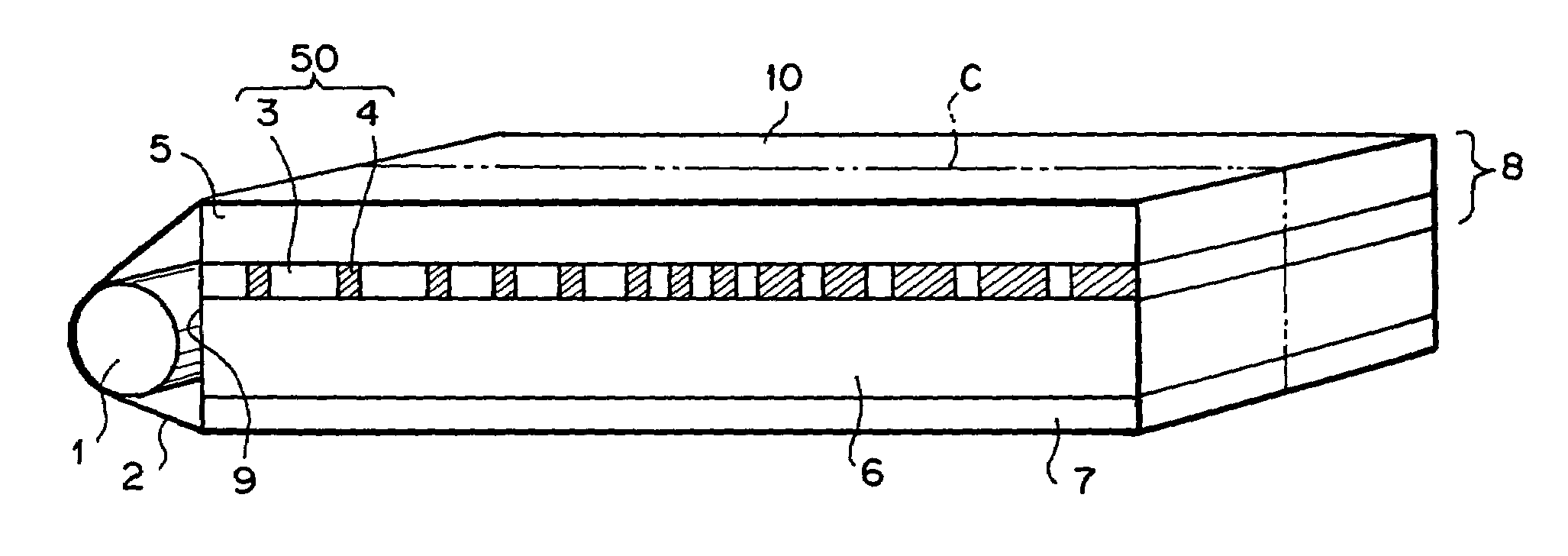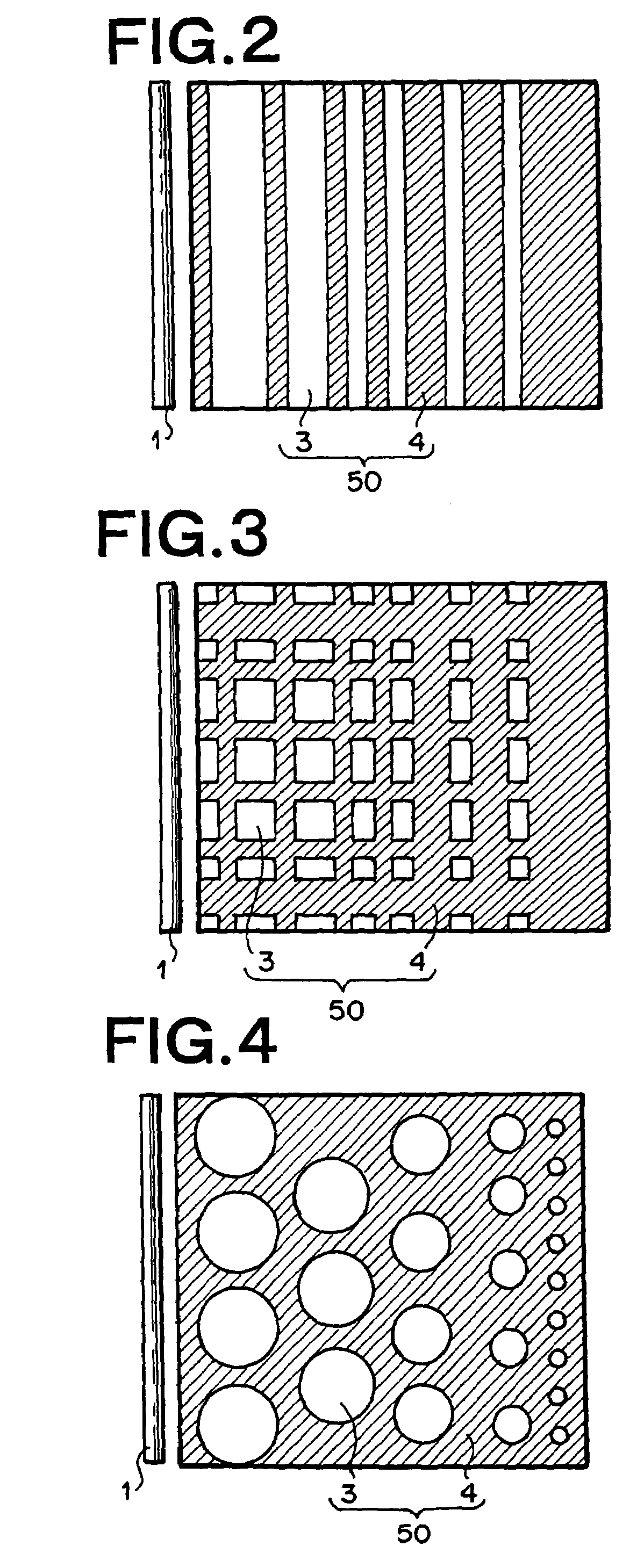Light source device
a technology of light source and light guide, which is applied in the direction of lighting and heating equipment, instruments, machines/engines, etc., can solve the problems of uniform luminance in the light output surface, inability to obtain a good display screen, and difficulty in weight reduction or thinning of the back surface light source device of direct-under lighting system, etc., to achieve the effect of increasing the distance from the primary light source and reducing the thickness of the light guid
- Summary
- Abstract
- Description
- Claims
- Application Information
AI Technical Summary
Benefits of technology
Problems solved by technology
Method used
Image
Examples
example 1
[0179]By the manufacturing method described above with reference to FIGS. 14 and 15, a surface light source device comprising a light leakage modulator having a light diffusion function was manufactured. A mat finished structure was employed for a light diffusion function layer 42 and, regarding a metal mold for transferring the mat finished structure, glass beads having a diameter of 50 to 90 μm were blasted to a SUS plate to form a concave and convex configuration. Then, the mold was wound around a roll to form a roll mold. On the other hand, a circular form similar to that shown in FIG. 4 was employed for a low refractive index region 3 of a composite layer 50 for controlling a light leakage distribution from a light guide 6 to the layer 42 of the mat finished surface, and an air layer (refractive index of 1.000) was employed for the low refractive index region 3. However, a diameter of each circular low refractive index region 3 was set to 60 μm, and a light leakage intensity di...
example 2
[0183]A light leakage modulator was manufactured by using a roll transfer mold to perform UV-curing of ultraviolet curable resin compositions on both surfaces of a polyester film based on the same method as that of the example 1, and a surface light source device having an elongated prism 28 similar to that shown in FIG. 9 was manufactured. That is, in place of the mat finished structure function layer 42 of the example 1, a function layer was used including continuous elongated prisms, where many elongated prisms 28 each having first and second prism surfaces 28a, 28b extending in a direction substantially parallel to a light input surface of a light guide were continuously arrayed in a direction substantially orthogonal to the light input surface of the light guide. An inclination angle of the first prism surface 28a of the elongated prism 28 was 45°, and that of the second elongated prism was 85°. For a size of the surface light source, a length in a direction along a first prima...
example 3
[0185]A surface light source device having narrow visual field characteristics similar to those of the example 2 was manufactured. However, a length of the surface light source device in a direction along a primary light source 1 was 30 mm, a length in a direction orthogonal to the primary light source was 40 mm, and a thickness was 1 mm. Six LED's were used in place of the cold-cathode tube for the light guide of the example 2, and these were arranged adjacently to a light input end surface of a light guide equally at intervals of 5 mm.
[0186]An outputted light luminance distribution (output angle distribution) of the surface light source device was measured. A width of output angles (angular half value width) having luminance value of half the front luminance was about 23° in a direction vertical to the light input surface of the light guide, and thus narrow visual field characteristics were exhibited. Moreover, a ratio of a minimum luminance value / maximum luminance value regarding...
PUM
 Login to View More
Login to View More Abstract
Description
Claims
Application Information
 Login to View More
Login to View More - R&D
- Intellectual Property
- Life Sciences
- Materials
- Tech Scout
- Unparalleled Data Quality
- Higher Quality Content
- 60% Fewer Hallucinations
Browse by: Latest US Patents, China's latest patents, Technical Efficacy Thesaurus, Application Domain, Technology Topic, Popular Technical Reports.
© 2025 PatSnap. All rights reserved.Legal|Privacy policy|Modern Slavery Act Transparency Statement|Sitemap|About US| Contact US: help@patsnap.com



